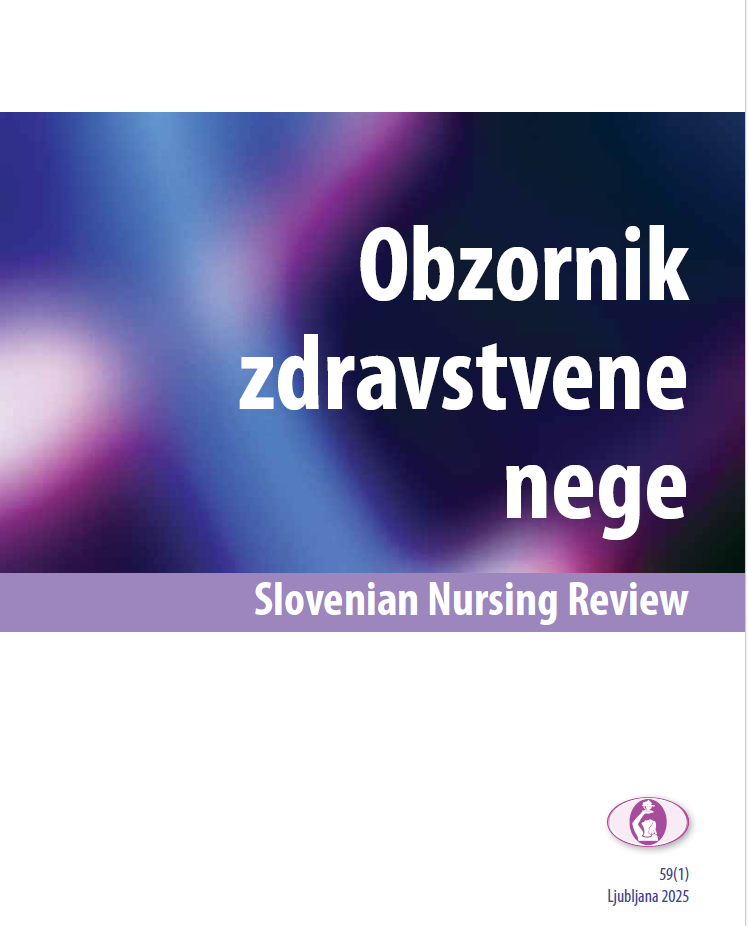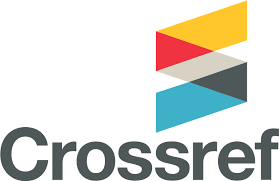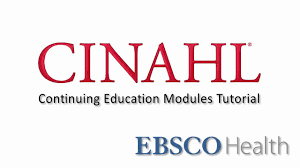The social and cultural context of adolescent sexuality from the perspective of health sciences students
A focus group study
DOI:
https://doi.org/10.14528/snr.2025.59.1.3240Keywords:
student perspective, taboo, intimate relationships, influence, sex educationAbstract
Introduction: Sexuality becomes more apparent with the onset of hormonal changes that characterise puberty and the change in the associated feelings and emotions. The information that adolescents receive often leads them to misconstrue and misinterpret adolescent sexuality. The aim of this study was to explore the social and cultural context of adolescent sexuality from the perspective of Health Sciences students.
Methods: A qualitative research methodology using focus groups was employed. The purposive sample consisted of twelve students of Health Sciences (eight Nursing students and four Dietetics students), who were divided into three focus groups. The study took place in November 2022 at the participating institution. The data were analysed using content analysis.
Results: Three thematic categories were identified: 1) student perspectives on adolescent sexuality, 2) societal influences on adolescent sexuality, and 3) knowledge acquisition from the perspective of adolescents. Student perspectives varied between age groups.
Discussion and conclusion: The results reflecting the students’ perspectives suggest that adolescents engage in sexual activity from a very early age. Even if they are unaware of the potential risks at the time, they may be negatively affected later in life. Further research should be limited to Nursing students and expanded to other geographic areas of the country. The results could help to develop more effective sex education programmes.
Downloads
Metrics
References
Adarsh, H., & Sahoo, S. (2023). Pornography and its impact on adolescent/teenage sexuality. Journal of Psychosexual Health, 5(1), 35–39. https://doi.org/10.1177/26318318231153984
Askari, F., Mirzaiinajmabadi, K., Rezvani, M. S., & Asgharinekah, S.-M. (2020). Facilitators of sexual health education for male adolescents in Iran: A qualitative study. Iranian Journal of Nursing and Midwifery Research, 25(4), 348–355. https://doi.org/10.4103/ijnmr.IJNMR_299_19 PMid:33014748; PMCid:PMC7494163
Baams, L., Dubas, J. S., Overbeek, G., & van Aken, M. A. G. (2015). Transitions in body and behavior: A meta-analytic study on the relationship between pubertal development and adolescent sexual behavior. Journal of Adolescent Health, 56(6), 586–598. https://doi.org/10.1016/j.jadohealth.2014.11.019 PMid:25636818
Center for Disease Control and Prevention. (2018). Substance Use and sexual risk behaviors among youth. https://www. cdc.gov/healthyyouth/factsheets/substance_use_fact_sheetdetailed. htm
Chou, L.-N., Shen, I. C., Chu, T.-P. , & Chen, M.-L. (2020). Effectiveness of a school-based social marketing intervention to promote adolescent sexual health. Health Education Journal, 79(1), 34–45. https://doi.org/10.1177/0017896919862597
Clifton, D., Trinh, J., & Woods, S. (2016). Improving safe sex practices in adolescents and young adults. Academic Pediatrics, 16(6), e16–e17. https://doi.org/10.1016/j.acap.2016.05.037
Corcoran, J. L., Davies, S. L., Knight, C. C., Lanzi, R. G., Li, P., & Ladores, S. L. (2020). Adolescents' perceptions of sexual health education programs: An integrative review. Journal of Adolescence, 84, 96–112. https://doi.org/10.1016/j.adolescence.2020.07.014 PMid:32896710
Davids, E. L., Zembe, Y., de Vries, P. J., Mathews, C., & Swartz, A. (2021). Exploring condom use decision-making among adolescents: The synergistic role of affective and rational processes. BMC Public Health, 21(1), Article 1894. https://doi.org/10.1186/s12889-021-11926-y PMid:34666719; PMCid:PMC8527692
Finigan-Carr, N. M., Craddock, J. B., & Johnson, T. (2021). Predictors of condom use among system-involved youth: The importance of sex ed. Children and Youth Services Review, 127, Article 106130. https://doi.org/10.1016/j.childyouth.2021.106130 PMid:36090583; PMCid:PMC9457273
Fortenberry, J. D. (2013). Puberty and adolescent sexuality. Hormones and Behavior, 64(2), 280–287. https://doi.org/10.1016/j.yhbeh.2013.03.007 PMid:23998672; PMCid:PMC3761219
Hayward, G. M. (2019). Religiosity and premarital sexual behaviors among adolescents: An analysis of functional form. Journal for the Scientific Study of Religion, 58(2), 439–458. https://doi.org/10.1111/jssr.12588 PMid:31327874; PMCid:PMC6640872
Kar, S. K., Choudhury, A., & Singh, A. P. (2015). Understanding normal development of adolescent sexuality: A bumpy ride. Journal of Human Reproductive Sciences, 8(2), 70–74. https://doi.org/10.4103/0974-1208.158594 PMid:26157296; PMCid:PMC4477452
Kocijančič, N., & Prosen, M. (2020). Kultura rojevanja na Goriškem v 20. stoletju: kvalitativna analiza porodnih zgodb. Obzornik zdravstvene nege, 54(3), 214–222. https://doi.org/10.14528/snr.2020.54.2.2996
Kodeks etike v zdravstveni negi in oskrbi Slovenije in Kodeks etike za babice Slovenije. (2014). Zbornica zdravstvene in babiške nege Slovenije – Zveza strokovnih društev medicinskih sester, babic in zdravstvenih tehnikov Slovenije
Koletić, G., Landripet, I., Tafro, A., Jurković, L., Milas, G., & Štulhofer, A. (2021). Religious faith and sexual risk taking among adolescents and emerging adults: A meta-analytic review. Social Science & Medicine, 291, Article 114488. https://doi.org/10.1016/j.socscimed.2021.114488 PMid:34662764
LeJeune, B. C., Zimet, G. D., Azzouz, F., Fortenberry, J. D., & Aalsma, M. C. (2013). Religiosity and sexual involvement within adolescent romantic couples. Journal of Religion and Health, 52(3), 804–816. https://doi.org/10.1007/s10943-011-9512-6 PMid:21735321; PMCid:PMC3250557
Lep, Ž. (2017). Fokusne skupine [seminarska naloga, Univerza v Ljubljani, Filozofska fakulteta]. Lincoln, Y. S. & Guba, E. G. (1985). Naturalistic Inquiry. Sage Publications.
Munea, A. M., Alene, G. D., Debelew, G. T., & Sibhat, K. A. (2022). Socio-cultural context of adolescent sexuality and youth friendly service intervention in West Gojjam Zone, Northwest Ethiopia: A qualitative study. BMC Public Health, 22(1), Article 281. https://doi.org/10.1186/s12889-022-12699-8 PMid:35148701; PMCid:PMC8840675
Nacionalni inštitut za javno zdravje (2020). Spolno prenesene okužbe v Sloveniji: Letno poročilo 2020. Ljubljana: Nacionalni inštitut za javno zdravje.
Pavelová, Ľ., Archalousová, A., Slezáková, Z., Zrubcová, D., Solgajová, A., Spáčilová, Z., Krištofová, E., & Slamková, A. (2021). The need for nurse interventions in sex education in adolescents. International Journal of Environmental Research and Public Health, 18(2), Article 492. https://doi.org/10.3390/ijerph18020492 PMid:33435342; PMCid:PMC7827239
Potter, M. H., & Font, S. A. (2019). Parenting influences on adolescent sexual risk-taking: Differences by child welfare placement status. Children and Youth Services Review, 96, 134–144. https://doi.org/10.1016/j.childyouth.2018.11.038 PMid:31736530; PMCid:PMC6858058
Sanz-Martos, S., López-Medina, I. M., Álvarez-García, C., & Álvarez-Nieto, C. (2021). Educational program on sexuality and contraceptive methods in nursing degree students. Nurse Education Today, 107, Article 105114. https://doi.org/10.1016/j.nedt.2021.105114 PMid:34507261
Sim, J., & Waterfield, J. (2019). Focus group methodology: Some ethical challenges. Quality & Quantity, 53(6), 3003–3022. https://doi.org/10.1007/s11135-019-00914-5
Tenny, S., Brannan, J. M., & Brannan, G. D. (2023). Qualitative Study. In StatPearls. StatPearls Publishing. http://www.ncbi. nlm.nih.gov/books/NBK470395/ Unis, B., Bjuresäter, K., &Nilsson, J. (2023). The Interplay of multiple influences on the development of sexuality in lateadolescence: A Grounded Theory Study. American Journal of Sexuality Education, 18(3), 459–483. https://doi.org/10.1080/15546128.2022.2111010
Verrastro, V., Saladino, V., Petruccelli, F., & Eleuteri, S. (2020). Medical and health care professionals' sexuality education: State of the art and recommendations. International Journal of Environmental Research and Public Health, 17(7), Article 2186. https://doi.org/10.3390/ijerph17072186 PMid:32218258; PMCid:PMC7177861
Widman, L., Choukas-Bradley, S., Helms, S. W., & Prinstein, M. J. (2016). Adolescent susceptibility to peer influence in sexual situations. The Journal of Adolescent Health, 58(3), 323–329. https://doi.org/10.1016/j.jadohealth.2015.10.253 PMid:26794431; PMCid:PMC4766019
Wright, P. J., Herbenick, D., & Paul, B. (2020). Adolescent condom use, parent-adolescent sexual health communication, and pornography: Findings from a U.S. Probability sample. Health Communication, 35(13), 1576–1582. https://doi.org/10.1080/10410236.2019.1652392 PMid:31403326
World Medical Association. (2013). World Medical Association Declaration of Helsinki: Ethical principles for medical research involving human subjects. Journal of the American Medical Association, 310(20), 2191–2194. https://doi.org/10.1001/jama.2013.281053 PMid:24141714
Downloads
Published
How to Cite
Issue
Section
License
Copyright (c) 2025 Slovenian Nursing Review

This work is licensed under a Creative Commons Attribution 4.0 International License.
As the author undersigned hereby, I transfer, assign, or otherwise convey the following authorship rights as comprised in the Copyright and Related Rights Act (CRRA) to the Slovenian Nursing Review, Ob železnici 30A, 1000 Ljubljana: the right of reproduction - the exclusive right to fix the work in a material medium or in another copy directly or indirectly, temporarily or permanently, by any means and in any digital form, in whole or in part (CRRA, Article 23); the right of distribution (CRRA, Article 24); the right of making a work available and accessible through the internet (CRRA, Article 32a); the right of transformation, especially the exclusive right to translate a pre-existing work (CRRA, Article 33). The transfer of author rights applies to the article in its entirety, including pictorial and/or graphic works and possible supplements. The transfer of rights is exclusive and unlimited in duration or territory.
























